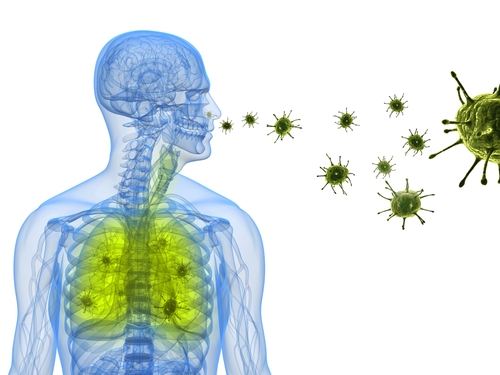Researchers found that a protein known as interleukin-27 (IL-27) is an essential regulator of the inflammatory process in respiratory infections caused by the parainfluenza virus. Results from the study suggested that IL-27 could have both diagnostic and therapeutic potential in the clinic.
The study, “Il-27 Limits Type 2 Immunopathology Following Parainfluenza Virus Infection,” conducted by researchers at the University of Pennsylvania’s Perelman School of Medicine and its School of Veterinary Medicine, was published in the journal PLoS Pathogens.
The Paramyxoviruses class — which includes the respiratory syncytial virus (RSV), human parainfluenza virus, and the measles virus — is associated with severe respiratory diseases that are a significant cause of hospitalization and death among children and the elderly.
The human parainfluenza virus, in particular, can lead to the development of pneumonia, and despite its aggressiveness, there are virtually no vaccines or treatments that can effectively control or eradicate it.
The researchers used an animal model infected with a mouse parainfluenza virus (Sendai virus), which induced an acute respiratory infection and an immune response similar to what is seen in humans.
Increased levels of IL-27 were detected in the lungs of the mice after infection with Sendai virus, suggesting that IL-27 could be playing a role in the response process.
“IL-27 is a specific cytokine naturally produced by immune cells to regulate the response to infection, limiting symptoms such as severe airway inflammation,” said Gaia Muallem, MD, a Perelman School of Medicine Measey Fellow, in a press release. “Our recognition of IL-27’s importance in mouse models could lead to improved diagnosis and prevention of lung disease following a viral infection in human patients.”
To confirm this hypothesis, the researchers infected mice that were genetically manipulated to not express the IL-27 protein or its receptor. They observed that these mice presented more aggressive symptoms and showed a higher mortality. This was not due to increased virus replication, but the result of an exacerbated and uncontrolled immune response.
These results, together with other studies, showed that IL-27 has a crucial role in controlling the immune response by keeping the subset of immune T-cells — the cells responsible for the destruction of microorganisms — under control, preventing them from causing damage.
“The suggestion here is that IL-27 normally limits the severity of disease during these viral infections in part by influencing the quality of T-cell responses,” Muallem said. “Other studies have also linked variants of the IL-27 gene with chronic or severe lung disease, so in theory, we might be able to test for such variants to identify people who are more at risk of complications from these lung infections.”
More studies are needed to determine the therapeutic potential and effectiveness of IL-27 administration to treat severe respiratory viral infections, including pneumonia.


